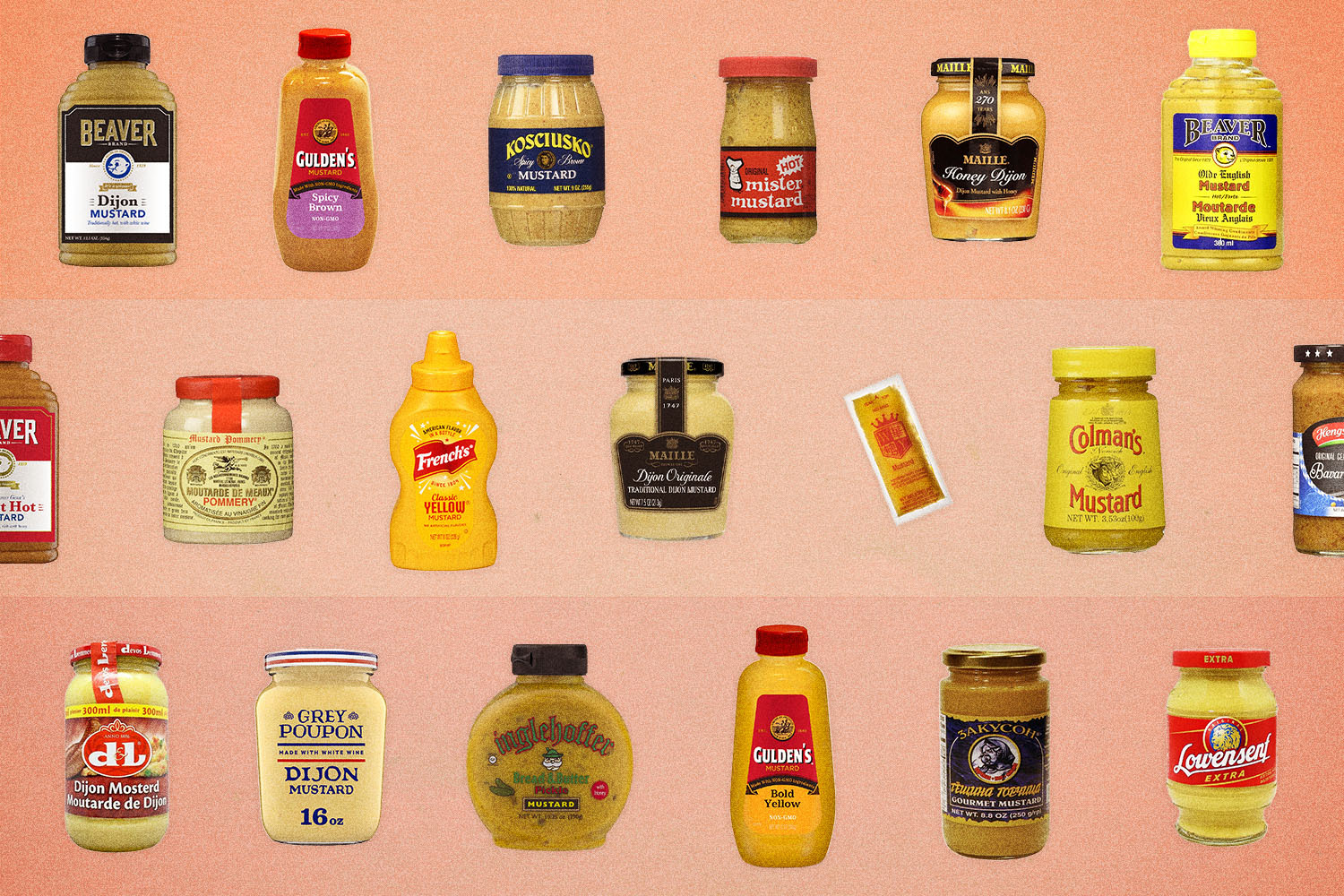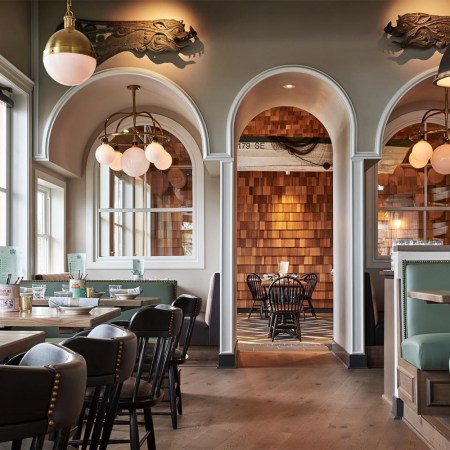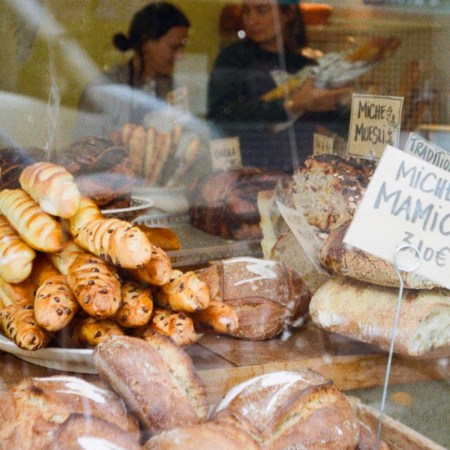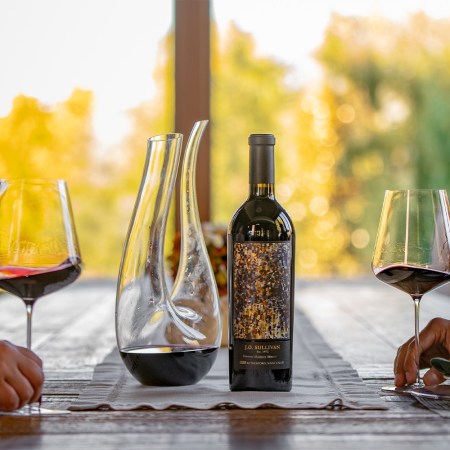In France, when someone “believes himself to be the High Mustard-Maker to the Pope,” it means he thinks he’s a bit too big for his britches — a holdover idiom from when Pope Jean XXII of Avignon invented the job for his erstwhile nephew. But Maille Mustard Sommelier Brandon Collins is far from idle — or boastful. What he is is passionate and humble, not to mention grateful to have stumbled upon perhaps one of the oddest but most rewarding jobs: being the North American expert on the French mustard company’s 275 years of history and 108 varieties of France’s favorite spread.
“I’m still not quite sure exactly how that happened,” he tells InsideHook.
With a bit of coaxing, however, the native Midwesterner reveals that he has long been captivated by food as something that brings people together, a passion he turned into a career after graduating from the Culinary Institute of America in 2001.
“After opening a couple of restaurants, chasing New York Times stars, and all of the fun stuff,” he recalls, he started a family and “kind of realized it was time for me to kind of work on that work-life balance thing.”
He hung up his toque and went to work for Sodexo, and, four years later, he landed a job at Maille, becoming the first-ever North American mustard sommelier for France’s biggest mustard producer.
I Tried 30 Mustards This Summer. These Were the Best.
In 1975, James Beard ranked his 28 favorite mustards. Nearly 50 years later, I hunted them all down — and then some.“The sommelier position itself was something that [company founder] Antoine Maille wanted in all of his boutiques,” says Collins. While the idea “kind of fell off,” he says, it resurfaced when Unilever acquired the French brand in 1999: the idea of having an expert in all things Maille — but also all things mustard — in-house at the company.
Before Collins, Maille had only one mustard sommelier, based in France. And France was unsurprisingly Collins’ first port of call when it came to learning the ins and outs of mustard agriculture, production and history. And while, he recalls, “as a chef, I had a general understanding of mustard,” a whole new world of knowledge and flavors was about to open itself to him.

A member of the brassica family, the category to which cabbage, broccoli, and even arugula belong, the greater genus to which the little mustard seed belongs is home to about 3,000 plants, according to Collins.
“Of those 3,000 plants, we make mustard, the condiment, from three of them,” he says. “So that’s pretty mind-boggling to me.”
As a mustard sommelier, a vast portion of his day hinges on research: reading peer-reviewed studies and articles, but also tasting: right off the line, when the mustard is at its bitterest, or fresh out of the tap in the Maille boutique, when the use of white wine as opposed to the vinegar found in most jarred mustard enhances the spice even more. Maille’s dozens of varieties include classic flavors like tarragon or cassis, but also more off-the-wall creations like blue cheese and even pain d’épices, a French gingerbread.
Collins also slips back into his chef whites on a fairly regular basis, organizing curated dinners where each and every course features mustard — albeit not in ways most folks would expect.
“It’s not just there to put on top of a burger, put on top of a dog, slather on pâté or put on your charcuterie board,” he explains. “It is very similar to the way that you would utilize soy sauce or even salt in some instances.”
Mustard dinners could, for example, begin with a mustard cocktail, with the spread playing the role of acid, spice, and salt one finds in a particularly good jalapeño-infused margarita. A mustard crumble and foie gras appetizer could follow, with a mustard-tinged dessert for good measure.
Being a Maille mustard sommelier in North America specifically has a host of perks, not the least of which is the possibility of unique partnerships, such as a recent one with Mike’s Hot Honey.
“It’s such a different spice level in terms of the way it acts and interacts with your palate,” he says. “You have the chiles, but you also have that Dijon kind of horseradishy punch.”
And he’s brimming with ideas, like a future partnership with a boutique spice house to infuse mustard with spice blends like za’atar or ras el-hanout.
“It’s definitely something that is very fulfilling and something that I am very, very passionate about,” he says. “So at the end of the day, for me, it’s not work at all. It’s fun.”
He’s agreed to share some of his most piquant discoveries with InsideHook.
His favorite Maille flavor:
“If I had to pick the favorite one that we’ve done, there was a smoked black pepper that was in-sane. It was a smoked black pepper whisky, and it was ridiculous.”
The most surprising mustard pairing he loves:
“Mustard and chocolate. Because of mustard and what it is, it literally reacts to chocolate the exact same way that espresso does. So whenever you’re making a chocolate cake, it always says put the powdered espresso in, or a shot of espresso, because what espresso does to chocolate is it enhances certain flavor notes in it. Mustard does the exact same thing.”
The secret to diminishing mustard’s heat:
“Heat, in general, will diminish the spiciness. And then if you add 14 pounds of fat to it, that also helps as well.” (See: French lapin à la moutarde, a slow-cooked rabbit dish pairing mustard with heaps of butter and cream.)
His go-to mustard pairing:
“This is gonna sound probably super cliché, but literally, a thin slice of ham on a good baguette with, like, a slather of mustard to me is heaven.”
This article was featured in the InsideHook newsletter. Sign up now.























